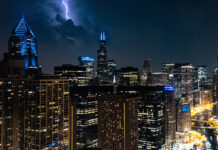A team from Johns Hopkins Medicine has found that PCR-based tests for SARS-CoV-2 have a false negative rate of at least 20%, depending on the time of testing.

The majority of tests for the novel coronavirus involve taking a swab from the back of the nose or the throat for genetic analysis.
This analysis uses a laboratory procedure called reverse transcriptase-polymerase chain reaction (RT-PCR), which converts genetic material from the virus (RNA) to DNA before amplifying it. It allows the detection of genetic material specific to the SARS-CoV-2 virus, confirming a diagnosis of the associated disease, COVID-19.
Although serological, or antibody, tests are also available, these typically serve to confirm a past infection in people who have since recovered from COVID-19, rather than to detect an active infection.
There has been much discussion about the accuracy of antibody tests, with manufacturers even withdrawing some such tests due to concerns about their reliability. A new analysis suggests that the accuracy of RT-PCR could also be under question.
Scientists from Johns Hopkins Medicine in Baltimore, Maryland, have shown that as many as 1 in 5 RT-PCR tests for the coronavirus may produce false negatives, incorrectly informing a patient that they do not have a SARS-CoV-2 infection when they actually do.
The details appear in the Annals of Internal Medicine.
Since the beginning of the coronavirus outbreak, RT-PCR has had routine use as a diagnostic tool. However, the accuracy of the technique in detecting SARS-CoV-2, and particularly how this relates to the length of time since the infection, is unclear.
Understanding the accuracy of the test is vital because the results frequently contribute to important decisions, such as whether to allow healthcare workers to return to work.
Incorrectly telling a person working on the frontline that they do not have a SARS-CoV-2 infection and can return to work could lead to further spread of the virus. Additionally, the information from testing also informs the decisions of governments regarding the lifting of restrictions.
To estimate the rate of false-negative tests for the coronavirus, the researchers behind this study searched the literature on the topic. They included studies that used an RT-PCR-based test to detect SARS-CoV-2 in samples collected from the upper respiratory tract and that also reported the time since symptom onset or exposure to the virus.
They identified seven studies in total, which included data from 1,330 patient samples, including inpatients (people in the hospital) and those managing their symptoms at home.
Their analysis showed that the likelihood of a false-negative result varied depending on the time since infection.
It appears that the virus is not detectable immediately after infection. On the first day of infection, the probability of missing a diagnosis, i.e., a false-negative result, was 100%.
At day 4 after exposure to the virus, the probability of a false-negative result seems to reduce to 67%. By day 8, it decreases to 20%, beginning to increase again afterward. By 3 weeks postexposure, the chance of a false negative result reaches 66%, the authors estimate.
The results indicate that the virus is difficult to detect by RT-PCR in the days immediately following infection, suggesting that this testing route offers limited value during this period (3–5 days postinfection).
The authors recommend against making major decisions, such as removing personal protective equipment (PPE) or ending quarantine, based on results obtained in this period. Similarly, the test offers limited value a long time after the initial exposure.
They say that 8 days following exposure, which is roughly equivalent to 3 days following the onset of symptoms, is the optimal time for testing.
At this time, the risk of obtaining a false-negative result is at its lowest, although there is still a 1 in 5 chance of obtaining such a result.
The authors say that the reasons for such a high rate of false negatives, beyond technique-associated error, include differences in the amount of viral genetic material in people’s samples and differences in sample collection techniques.
On the basis of their findings, the authors say that it is important to exercise caution when interpreting the results of RT-PCR tests for SARS-CoV-2, particularly if the test took place early on in the course of infection.
If an individual has symptoms consistent with COVID-19 but tests negative, the authors suggest not ruling out infection and carefully considering the “clinical and epidemiologic situation.”
They also say that a combination of antibody testing and PCR-based methods could be useful for patients who no longer have symptoms.
“Clinicians should consider waiting 1 to 3 days after symptom onset to minimize the probability of a false-negative result.”
– The study authors
The authors do note some limitations to their study, including the fact that the studies that they analyzed had different designs. They say that further studies are necessary to characterize the performance of RT-PCR tests for SARS-CoV-2 better and to identify alternative, more sensitive approaches.
For live updates on the latest developments regarding the novel coronavirus and COVID-19, click here.






